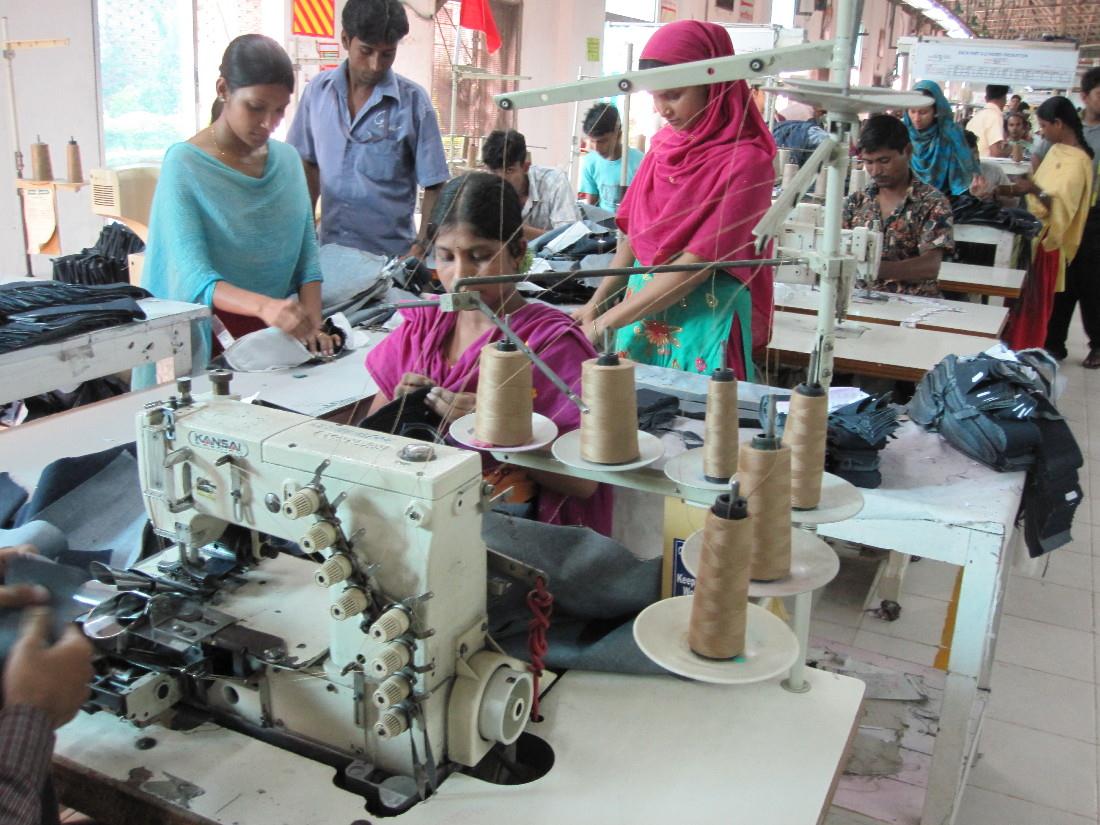Bangladesh must keep on investing in new infrastructure in order to stop its garment export sector from stagnating, a senior official with the Bangladesh Garment Manufacturers and Exporters Association (BGMEA) has told Asia Cargo News.
“We really need a deepsea port to reduce our lead times and cost. We can improve our trade,” the official, who asked not to be named, said in an interview.
This seemingly should not be a concern for a trade valued at US$23 billion in FY2016-2017. However, exports have only grown by 2.9% this year as the country’s main garment markets, the US and the UK, have dipped by 9% and 6.5% respectively. The association takes the slow growth in stride, both pointing out previous bumper years and noting that the impact of Brexit and a new US presidential administration have had “some impact” on consumers.
It does, though, see new infrastructure as a key way to consolidate and improve its market share. A new deepsea port is the key part of this strategy, and would help solve two problems holding back the industry: limited port facilities, and the poor connections to those facilities. Chittagong, the de facto national gateway, proves both these but still manages to shift 95% of the countries containers and over 90% of the garment trade’s output.

Chittagong is also the point of entry for all of the country’s cotton imports, as none is grown in Bangladesh, and for a sizable part of the raw materials needed for yarn and knitwear as well as accessories such a buttons and zips.
The port lacks sufficient depth – put at nine to 10 metres by one former shipping industry source who would not allow their name to be used but who worked for a major European line. This means the port proper can only take vessels of 3,000 TEUs, resulting in “a lot” of barging in of containers to the port, which is 16 kilometres upriver.
As for the port proper, the BGMEA has a very big shopping list for the government, ranging from new terminals to new cranes (and a lot more of them) to computerization. “We have a huge list of equipment,” the BGMEA official said.
Matching this is another long list for on-land connectivity improvements, headed by new road and rail links, which are difficult issues to tackle. Not only is Bangladesh poor, but it is crisscrossed by more than 700 rivers, requiring multiple expensive bridges.
On the railway side, the former shipping official reported one train a day between the capital, Dhaka, where there is a lot of manufacturing, and Chittagong. Its cargo load is typically light at 20 or 25 containers.
“We have a lot of problems on the railway,” the BGMEA official said, noting the slow journey and “serious issues” with the handling capacity of inland container depots.
The railway network is relatively small at 2,877.10 km, of which 659.33 km is broad gauge, 1,808.05 km metre gauge and 409.72 km dual gauge. Multiple gauges aside, the tracks are in dire need of rehabilitation.
The roads don’t offer much more, despite the recent opening of a new highway between Dhaka and Chittagong which quickly clogged. “There needs to be an expressway. Then you have two different ways to get to Chittagong,” said the BGMEA official.
Government thinking is a bit broader than boosting one port as it looks to develop two more, Payra and Sonadia and tackle the on-land connectivity concerns although it is maybe wise not to get hopes up about this too quickly. Things will happen but eventually.
It has taken initiatives to prepare a master plan to upgrade Payra, west of Chittagong, to a full-fledged port, government sources said. “Construction of an administrative building and procurement of machinery for the Payra Sea Port is underway. Meanwhile, we are trying to mobilize resources to build the main port,” finance minister Abul Maal Abdul Muhith, said in his budget speech.
“Currently, we are exploring the possibilities of building the Sonadia Deep Sea Port (south of Chittagong) with the assistance of development partner countries or agencies under [a government-to-government] arrangement,” Muhith said.
“We will continue our efforts to transform the Bangladesh Railway into a reliable, cost-effective and environment-friendly public transport system. With this end in view, we have plans for construction of new tracks, doubling of rail lines, rehabilitation, construction of new railway bridges, underpasses [and] overpasses, modernization of the signaling system and collection and rehabilitation of passenger coaches in the 2016-17 fiscal year,” he said, without detailing where or how.
More realistic is the Padma Multipurpose Bridge which will connect more directly Dhaka with the southern region. A major part of the approach road and the main bridge and river training works have already been completed. Work is being done to ensure it opens for traffic next year.
While these are not unusual problems in poor countries, the battle to develop in Bangladesh has higher stakes. Garments are effectively the country’s bread winner in terms of exports – and in a country of 160 million people, that matters.
The garment trade is also keen as well to develop and fears poor logistics could trap it in the bottom of the market, the commodity rungs. It, and other sectors, are looking to move up the value chain – something which, as it happens, could see Bangladesh export much more than clothes.
“Bangladesh needs to continue to grow its apparel exports by improving the mix and quality of its products as well as diversifying into new labour-intensive and skill-intensive industries such as footwear, light engineering, and electronics,” Rajashree Paralkar, the World Bank’s acting country director for Bangladesh, told Asia Cargo News.
By Michael Mackey
Correspondent | Dhaka




